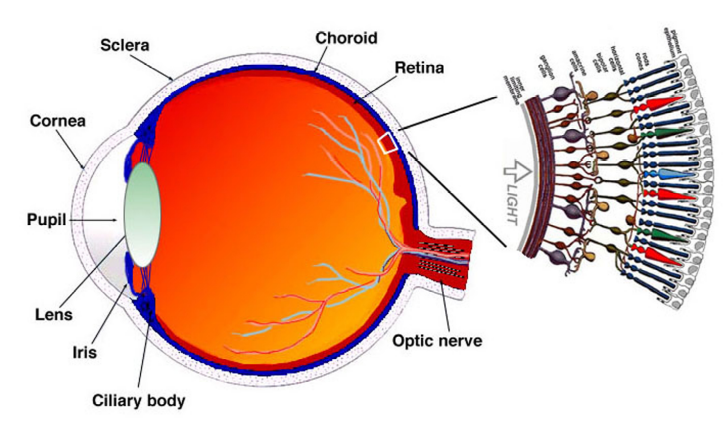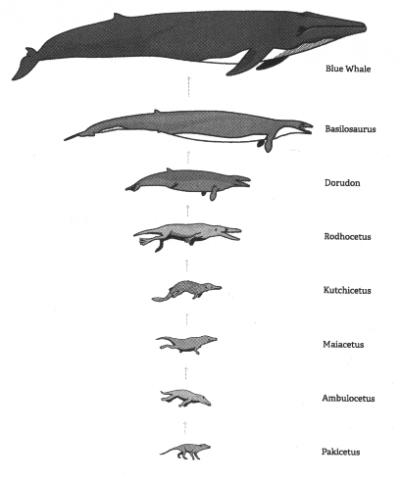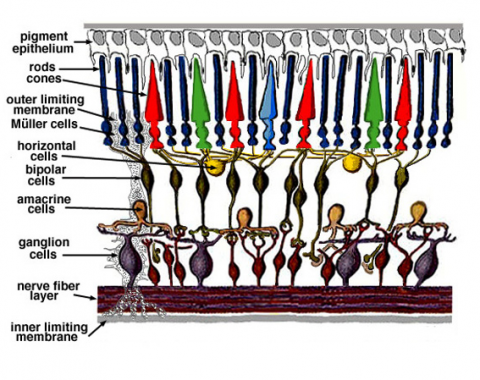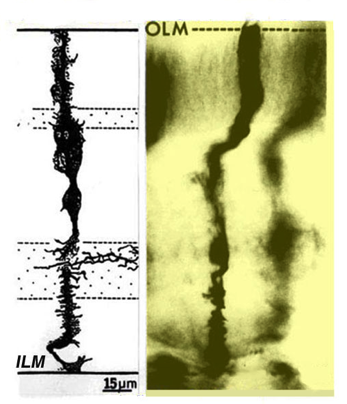Review of Jonathan Wells’s New Book Zombie Science (Part 2)
This is Part 2 of a two-part series on Konathan Wells's new book Zombie Science. 1 Wells is a noted intelligent design (ID) advocate and author of the influential book Icons of Evolution. 2 Most of Part 1 was dedicated to reviewing the original Icons. 3 Here in Part 2, several new icons of evolution will be discussed such as whale evolution, the human appendix, human “tails,” “junk” DNA, the “poor” design of the human eye, antibiotic resistance, and cancer. Other topics such as the impact of evolutionary thinking on education, medicine, social mores, human dignity, and science itself will be touched upon. As before, this review will explore the more important points brought out in the book, chapter by chapter. Wells, who has his doctorate in molecular and cell biology, is a good writer with a keen command of his subject. He writes clearly and concisely with penetrating insight and a sense of humor.
Chapter 5: Walking Whales
Evolutionists believe they have found a nearly complete fossil sequence for the evolution of modern whales from a land-based mammal called Pakicetus (52 mya, Fig. 2), but there are many problems (Table 1). As with fossils of alleged human ancestors, sometimes the fossil evidence in the “whale series” is partial and fragmentary with key diagnostic pieces missing. Nevertheless, evolutionary scientists are often quick to assume evolutionary relationships and fill in the gaps of fossil evidence with their imaginations. Such was the case with Pakicetus. The first fossil evidence consisted of a partial skull only. Nevertheless, drawings of Pakicetus included flippers, a blowhole, eyes on the side of the head (like modern whales), etc. Later fossil discoveries showed there was no blowhole, no flippers, and the eyes were positioned in front like most land animals. Also, an ear bone called sigmoid process, thought to be diagnostic of relatedness to whales, was found in Pakicetus.
But it is now known the sigmoid process in Pakicetus is dissimilar to the same bone in whales. 4 Also, the involucrum, another ear bone once thought to be unique to whales and present in Pakicetus, has now been found in other land animals (e.g. Indohyus), so it can no longer be considered diagnostic of whales. So there is now no compelling fossil evidence that Pakicetus was anything but a land animal with no obvious relationship to whales.
| Species (in order of appearance in fossil record - top most recent) | Dwells on land, sea or amphibious | Fossil Remains | Date | Extant or extinct | Involucrum | Size | Comments |
|---|---|---|---|---|---|---|---|
| Modern whales | sea | Complete skeleton | 49 mya to present | Extant and extinct | yes | 30-80 ft long | Tail fluke, flippers, blowhole, eyes on side of head in line with teeth, echolocation |
| Basilosaurus | sea | Same time as Dorudon | 40 mya | Extinct | yes | 65 ft long | Teeth not whale like; nostrils not on top |
| Dorudon | sea | Same time as Basilosaurus | 40 mya | Extinct | yes | 16 ft long, giant fresh water otter | - |
| Rodhocetus | amphibious | Incomplete | 42-48 mya | Extinct | yes | No flippers, had hoofed toes, no evidence for long tail, probably no fluked tail | |
| Kutchicetus | amphibious | Incomplete; smaller than Maiacetus and Ambulocetus | 42-48 mya | Extinct | yes | Long snouted crocodile | - |
| Maiacetus | amphibious | Incomplete | 42-48 mya | Extinct | yes | Size of a giant freshwater otter | |
| Ambulocetus | amphibious? | Incomplete, fragmentary | 50 mya | Extinct | Not whale-like | 7 ft long | no blowhole, had long neck like land animals, eye socket above teeth unlike whales |
| Pakicetus | land | Almost complete; initially only a skull from which an aquatic animal with flippers, a blowhole, and eyes on the side of the head was conjectured, now debunked | 52 mya | Extinct | Plate-like and similar to other land animals | Size of a wolf | Fossils buried with land animals, had hoofs, no flippers, no blow-hole, eyes on top - not side |
Other problems for the Pakicetus-to-whale evolutionary story include (1) the short time 5 (< 10 million years) available to transform a land mammal into a whale, (2) the fact that some of the organisms in Table 1 lived at the same time (e.g., Basilosaurus and Durodon), (3) that the oldest known fully aquatic whales were contemporaries of Ambulocetus, 6 (4) that the alleged vestigial hind legs of whales facilitate reproduction and are different in males and females, (5) the lack of an intermediate between Rodhocetus and Durodon, (6) whales are most similar to the hippopotamus genetically out of all extant land animals, but the earliest known hippos are only 15 million years old, etc.
The changes required to evolve a land mammal into a whale are numerous: legs into flippers and tail fluke, nose into a blowhole, eyes in front above teeth to eyes on the side in line with teeth, relocation of testicles to inside of the body, development of a counter-current cooling system to keep testicles cool for sperm production, and the development of echolocation in some species—just to name a few. Wells conservatively estimates the evolution of a land mammal into a whale would require thousands of specific beneficial coordinated genetic mutations in only a few million years at most. Richard Sternberg, an evolutionary biologist with two doctorates, says this would be impossible given our current understanding of population genetics. 7
Chapter 6: The Human Appendix and Other So-called Junk
Darwin claimed that there were several vestigial organs in humans, the appendix being one. He claimed that these organs served little or no purpose and were the remnants of once-functional organs inherited from evolutionary ancestors. Since vestigial organs were essentially useless; they could not have been designed but must have been the result of some random process. However, all the so-called vestigial organs are now known to have function, so the design argument is back on the table. For example, it is known that the human appendix helps fight infections and is a safe haven for beneficial bacteria, which are released into the gut after a bout of diarrhea. Those who believe in evolution say a functional organ can still be considered vestigial so long as it no longer provides the function it had in an evolutionary ancestor. But this is circular reasoning since it assumes evolution is true, the very claim that vestigial organs are supposed to be evidence for; it is merely an inference to homology.
Already mentioned are the “vestigial” hind legs of whales that are now known to aid in reproduction.
Then there is the evidence of so-called human “tails.” During human embryological development, the spinal column extends beyond the rest of the body. But when development is complete, the “tail” is gone and is replaced with a triangular bone called the coccyx. The coccyx was thought to be the remnant of a tail inherited from evolutionary ancestors. But the coccyx is an attachment point of several muscles, tendons, and ligaments. Some small projections seen at the base of the spine in some babies consist of skin, fat, blood vessels, but no bone or vertebrae. The projection can occur in other places where there is a spinal cord defect. Hence there is no vestigial tail and the coccyx has function.
Then there was the icon of “junk DNA.” Only a small percentage of human DNA codes for proteins. It was assumed the remainder of the DNA (~97%) was useless “fossil” (vestigial) DNA inherited from evolutionary ancestors. Many evolutionists such as Richard Dawkins said the existence of junk DNA disproved ID because a creator would never make useless DNA. Moreover, they claimed that the only reason DNA sequences in different animals were similar could thus only be common ancestry. But in 2012, the Encyclopedia of DNA Elements (ENCODE) Project published numerous reports in the journals Nature and Genome Research. ENCODE had examined about 1% of noncoding human DNA, randomly selected, for activity. They found that at least 80% of the noncoding DNA was transcribed into RNA, suggesting function. They also discovered that both strands of DNA were transcribed. Since then, many functions have been found for noncoding DNA including regulation of embryological development, regulation of the three-dimensional structure of chromosomes, control of fat metabolism, maintenance and function of the immune system, proper functioning of stem cells, development of nerve cells, development of muscles, development of bone cells, and many others.
Evolution requires nonfunctional junk DNA to “tinker” with. Otherwise mutations would have to be made to functional DNA, which would most likely result in DNA degradation instead of innovation. Assuming all mammals have a common ancestor, evolutionists claim only 10% of DNA has been conserved (kept by natural selection) implying the remaining 90% may not have added survival value. The ENCODE evidence stands contrary to this claim.
Chapter 7: The Human Eye

Figure 3a: The human eye
Then there is the icon of human eye evolution. Presumably, the human eye evolved from an ancestral sequence of organisms starting with an eye spot, then a compound eye, then a pinhole eye, and finally to the human camera eye. Evolutionists had pointed out that what they considered flaws in the construction of the human eye: blind spots and an inverted retina where the rods and cones (light-detecting cells) were facing away from the direction of light input and behind other structures potentially impairing light transmission (Figs. 3a and 3b).
According to evolutionists, this design hindered optimum function and therefore could not have been the product of ID. But as it turns out, their assessment was grounded in ignorance. Subsequent studies have revealed the existence of Müller cells (light grey cells in Fig. 3B; Fig. 4), cells that extend from the nerve fiber layer all the way to the rods and cones. Müller cells function as optical fibers which faithfully transmit light with little scatter. Moreover, this design of the eye places the rods and cones near the blood supply, facilitating efficient delivery of nutrients and removal of toxic waste products. Also, our blind spots are unique to each eye: the blind spot of the left eye is covered in the field of view of the right eye and vice versa. So the human eye is not poorly designed after all.
The same types of eyes appear in various phyla. For example, humans and Cephalopods (octopus and squid) have camera eyes. Evolutionists invoke convergent evolution 8 to explain how the similar eyes could exist in organisms whose last common ancestor did not have the organ. In other words, they believe random variations acted upon by natural selection produced the same organ multiple times independently, yet they criticize creationists for believing in miracles!
The fossil record in the Cambrian shows organisms that had compound eyes and even camera eyes in some vertebrates. Hence complex eyes are found at the base of the fossil record. There is no evidence for eyes before the Cambrian. So the evolutionary story that eyespots evolved into compound eyes, that evolved into pinhole eyes, that evolved into camera eyes is not supported by the fossil evidence.
Wells says that the cascade of chemical reactions initiated by light and resulting in a nerve impulse is irreducibly complex; if any of the chemicals are missing, there is no sight.
Chapter 8: Antibiotic Resistance and Cancer
Wells says antibiotic resistance has become an icon of evolution. Antibiotic resistance is a good example of microevolution, but not macroevolution. Evolutionists say medical doctors need to be proficient in evolutionary biology to be more effective in medicine, but macroevolution has nothing to do with antibiotic resistance. Many diseases have been cured without anyone thinking in evolutionary terms, polio and smallpox for example. Antibiotics such as penicillin, streptomycin, and tetracycline were developed without evolutionary thinking. Indeed, most leading researchers in the field have explicitly denied that evolutionary thinking had anything to do with their discoveries.
Antibiotic resistance occurs when a mutant in a population of bacteria is immune to the antibiotic. Then, in the presence of the antibiotic, the mutant eventually takes over the population. For example, some bacteria are immune to penicillin. They have a beta-lactamase enzyme complex (BLEC) that is able to deactivate penicillin. So when a population of bacteria that contains some organisms with the BLEC is exposed to penicillin, only the bacteria with the BLEC survive. The population of bacteria may “evolve” antibiotic resistance, but the origin of the BLEC is left unexplained. Darwinism can explain the survival but not the arrival of the fittest.
Another example of antibiotic resistance is bacteria that develop resistance to streptomycin. In this case, a mutation in the ribosome of the bacteria make them resistant. However, the mutants are otherwise defective. In the normal bacteria, streptomycin binds to the ribosome and disables it, thereby killing the bacteria. In the mutant strain, the shape of the ribosome has changed so that streptomycin no longer fits and hence the bacteria surviveBut the ribosome of the mutant is otherwise less able to function than the nonmutant version, so antibiotic resistance has come at a cost of information. Again, this is an excellent example of microevolution, but has nothing to do with macroevolution. Nevertheless. evolutionists often talk about antibiotic resistance as if it were a proof for macroevolution, a bait-and-switch ploy.
Wells poses the question: “Do we need evolutionary theory to overcome antibiotic resistance?” The answer: “Of course not!” Antibiotic resistance can be mitigated by using antibiotics only when necessary through proper diagnosis. Use of combination therapies which contain antibiotics that will kill all the strains of bacteria in a population should also be effective.
Then there is cancer. Cancer cells are usually mutants that have lost the ability to regulate cell division. Some evolutionists believe cancer is an example of speciation. Chromosome doubling has lead to new species of plants. Some say cancer generates new proteins with new func- tions. However, cancer cells have a broken regulatory system: the “replicate” switch is left permanently “on.” The mutant proteins involved have lost their specificity and stimulate cell growth, metabolism, and replication in an uncontrolled way. Clearly, the molecular machinery of a cancer cell has lost information present in normal cells. Cancer is not a good example of macroevolution. The occurrence of cancer can be mitigated by proper diet, exercise, early detection, chemotherapy, radiation treatment, and immunotherapy—none of which have anything to do with macroevolution.
Chapter 9: Zombie Apocalypse
The available evidence does not support abiogenesis or macroevolution. Evolutionary thinking has corrupted our social mores, our sense of human dignity, and our understanding of who we are in the universe; evolution has become a God substitute.
Ironically, most of the founders of modern science were Christians. Science and religion were not at odds for those men. There has never been a war between religion and empirical science. Today, many are leaving Christianity because of scientism. Many in the church now embrace evolution. Some think science and religion don’t overlap, but this is like saying that religion has nothing to say about objective reality.
Evolutionary thinking is corrupting education. Some want evolution taught at a young age to fight against the natural tendency to attribute origins to God. The icons of evolution are used to indoctrinate high school students into evolutionary propaganda. There are efforts to label teachers that express any reservations about evolution as science deniers; some teachers have been fired.
Evolutionary thinking is corrupting science. If evolution is true, then our brains evolved to favor perceptions that facilitate survival and reproductive success, not discovery of the truth. For example, assuming macroevolution is true, early humans may have learned to deny their mortality, thereby enabling them to engage in long term thinking that resulted in science and technology, but also religion (read superstition for the evolutionist). Hence evolutionary thinking destroys its own credibility by questioning its source: the human brain. Scientists are under pressure to espouse evolution at the expense of the truth. Pressure for a high output of research has resulted in a loss of quality in scientific publications. Fraud is on the rise.
Any hint of doubt in macroevolution is seen as religion, so the distinction between naturalism and empiricism has been blurred. Intelligent design has been equated with creationism—a false premise, a straw man. Some see ID as an attempt to undermine science in America. They assume ID opposes reason and empirical science.
Critics of ID confuse operational/empirical science with naturalism; ID supports the former by opposing the latter. Naturalism is held despite the evidence; this is zombie science.
Some evolutionists now say that cells have something akin to intelligence—“natural genetic engineering.” Many are now calling for a new conceptual framework for evolutionary biology—an extended evolutionary synthesis. Many have recognized the inadequacies of Darwinism and that DNA is not the sole repository of heritable information in the cell. Microevolution is all that is supported by the evidence. Macroevolution is not well supported.
Wells believes there is a paradigm shift underway. Many are now seeing the benefits to understanding biology through the lens of ID. In 2016, the Discovery Institute, home of the ID movement, received a private grant to fund more than a dozen research projects directed by ID-friendly scientists at universities around the world. Wells believes the reign of zombie science is coming to an end.
- 1Wells J (2017) Zombie Science: More Icons of Evolution, Discovery Institute Press, Seattle, WA, 237
- 2Wells J (2000) Icons of Evolution: Science or Myth?, Regnery, Washington, DC, 338
- 3Reynolds DW (2019) Review of Jonathan Wells’s new book Zombie Science (Part 1), TASC Newsletter, May
- 4Werner C (2017) Evolution: The Grand Experiment, Vol. 1, 3rd edition, New Leaf Press, Green Forest, AR, chapter 13 and Appendix F. This book contains many excellent photographs of the fossils referred to in Table 1 and interviews with some of the scientists who discovered them.
- 5For the sake of argument, I am assuming evolutionary “ages” are correct.
- 6Luskin C (2011) Discovery of “oldest fully aquatic whale” fossil throws a major bone into whale evolution story. Evolution News. https://evolutionnews.org/2011/10/discovery_of_oldest_fully_aqua/ Accessed 02 May 2019
- 7Whale evolution vs. population genetics - Richard Sternberg and Paul Nelson. https://www.youtube.com/watch?v=0csd3M4bc0Q Accessed 02 May 2019
- 8Reynolds D (2017) Can nature perform the same miracle multiple times? Problems with convergent evolution. TASC Newsletter, January, https://tasc-creationscience.org/article/can-nature-perform-same-miracle-multipletimes-problems-convergent-evolution Accessed 02 May 2019



